A DEED OF GIFT CHALLENGE
Having secured an historic victory in arguably the greatest America’s Cup of all time in 1987, Dennis Conner and the Stars ‘n’ Stripes team left Perth to something of a hero’s welcome. The comeback was complete Bob Hawke, the Prime Minister of Australia, reflecting on the loss in 1983 and the win in 1987 emoted to Conner: “It’s very difficult for any of us to understand how you felt that day. I offer you and your crew our admiration and our respect and more than that, our deep affection. On behalf of the people of Australia, I offer you our unqualified congratulations on a magnificent achievement.”
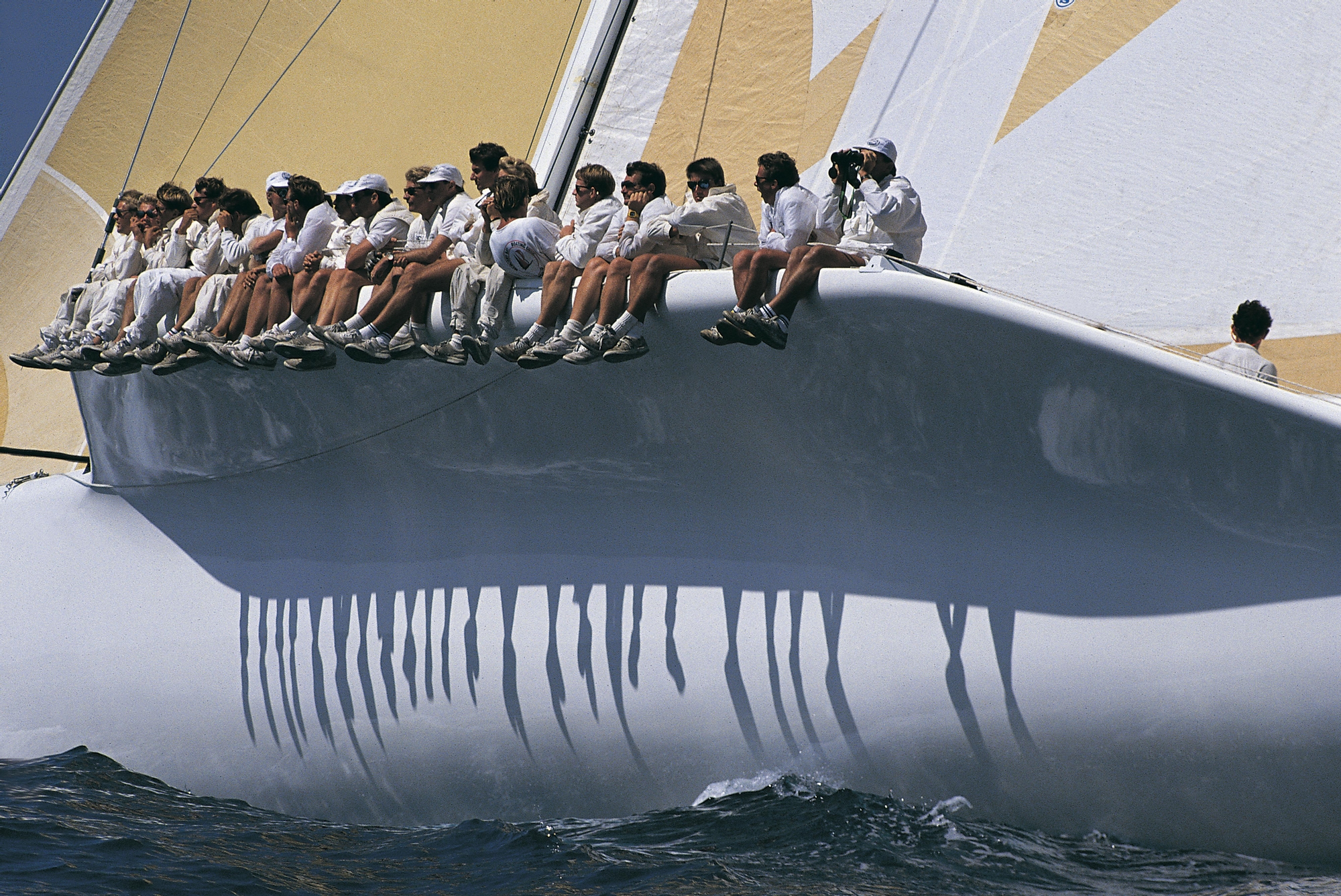
Hawke honoured his side-bet with President Ronald Reagan, gifting a bush hat called an ‘Akabroo’ (Reagan had bet his favourite cowboy hat on a US win), to Conner and the Americans left Perth on February 15th with the America’s Cup seated in first class, dressed in Conner’s beaver coat with the bush hat atop. Eye-witness accounts claim the Cup, with its unique personality, almost seemed to almost enjoy the flight home.
Landing into San Diego for the refuel en-route to Washington, the team were greeted by some 60,000 locals, ten-deep on the sidewalk for a victory reception before re-boarding the plane for a scheduled meeting at the White House with Ronald Reagan. Despite the snowy weather, another huge crowd greeted Conner and his team, before Reagan and Vice-President George Bush greeted the winners at a private reception in the Oval Office followed by a remarkable public speech by the President congratulating the team. Reagan even wore the bush hat at an angle. The America’s Cup was back where the Americans truly believed it belonged – albeit not at the New York Yacht Club.
A ticker-tape parade down Fifth Avenue in Manhattan ensued with long-time backer Donald Trump being presented with the trophy outside Trump Tower and Conner was quickly reclaimed from sporting outcast to the front-cover of Time Magazine and Sports Illustrated propelled in the country’s narrative as the ultimate winner. Behind the scenes though, things were starting to get ugly.
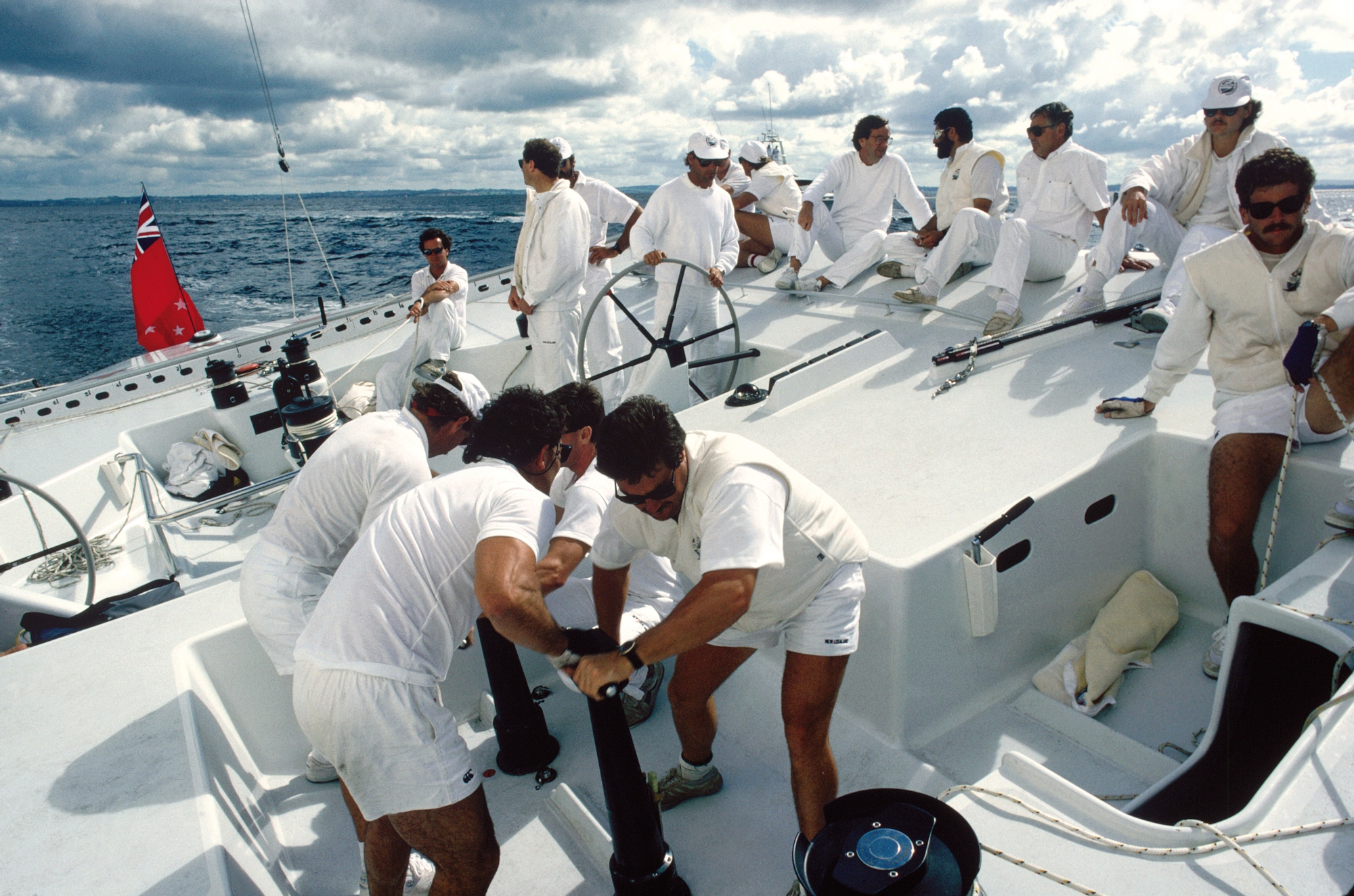
Having been shunned by the New York Yacht Club after his loss in 1983, it was under the umbrella of the San Diego Yacht Club that the Stars ‘n’ Stripes team had campaigned. A management agreement signed in 1986 had allayed the club’s fears regarding the costs involved with running an America’s Cup regatta should the Stars ‘n’ Stripes team be successful, and in return the syndicate got marketing rights to the event and could nominate their own America’s Cup Committee.
Upon winning, the club tried to disband this committee and tensions grew. Conner’s beef was that only $30,000 had come from the San Diego Yacht Club membership and whilst the club felt sure that the syndicate would hold the racing in San Diego, no explicit agreement was forged. Conner trained in Hawaii and for a while, the winds and waters there seemed more attractive for a defence, whilst thoughts of a super-rigged 12-Metre to counter San Diego’s light winds was tabled. In short, the club were frustrated with Conner and vice-versa, the skipper was frustrated at their lack of support for his campaign.
By June 1987, four months after the win in Fremantle, no resolution had been found and no venue, date or class had been agreed upon as the 12-Metre World Championships took place in Sardinia, Italy. The New Zealand ‘plastic fantastic’ 12-Metres had rolled on from Fremantle and KZ-7 ‘Kiwi Magic’ won the regatta whilst shoreside Michael Fay (not yet knighted for services to merchant banking and yachting) was at the centre of discussions about the future direction of the America’s Cup.
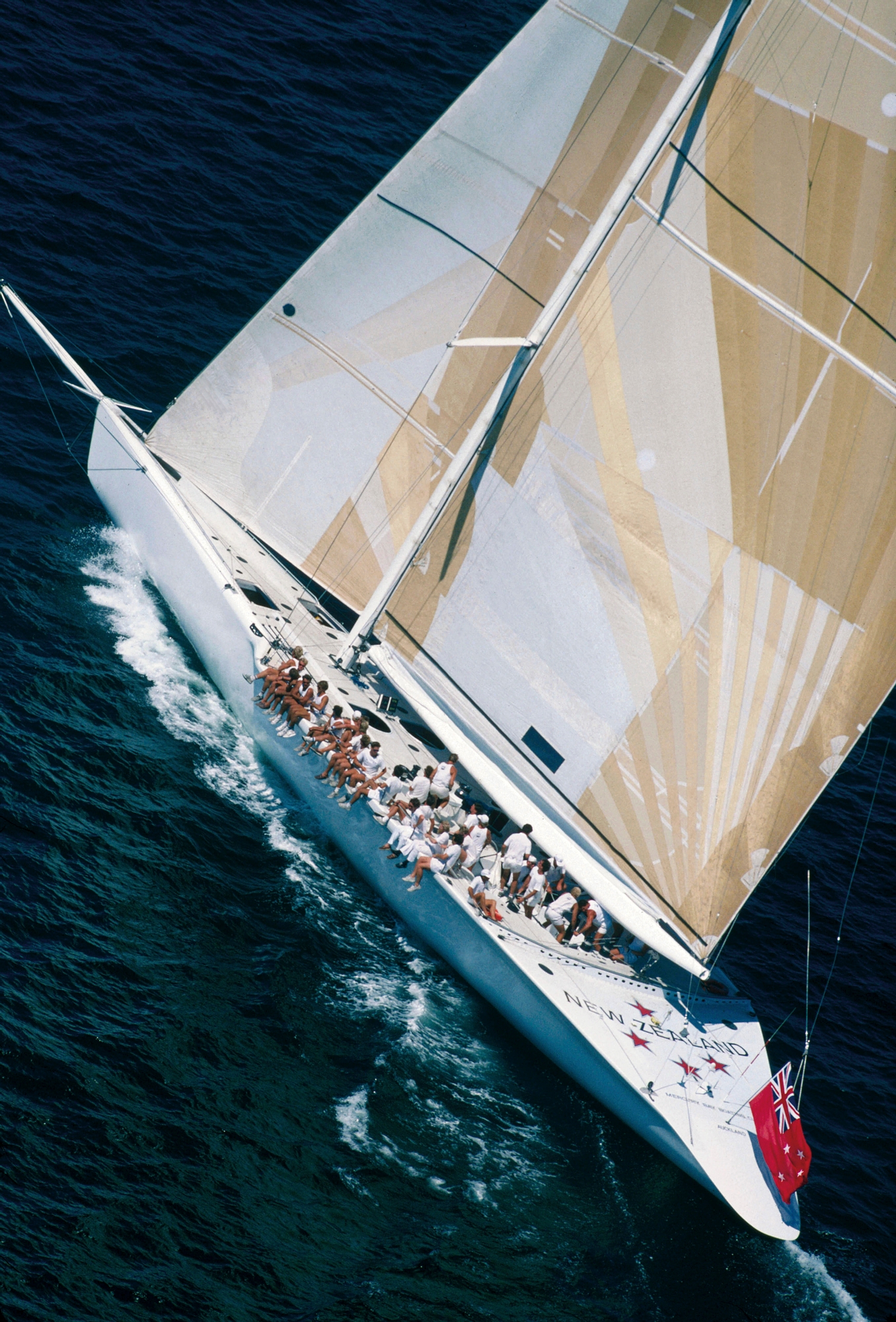
Unbeknown to the other competitors at the annual owner’s meeting of the class association was that Fay, tired of the delays in San Diego and the seemingly rudderless organisation, had instructed the lawyer, Andrew Johns, some weeks earlier to explore whether New Zealand could challenge under the strict terms of the Deed of Gift. In turn, Johns approached George Tompkins of the American law firm Condon & Forsyth to offer legal counsel on whether a challenge in a 90-foot waterline boat would be legal and whether any precedent established favour in terms of the 12-Metre Class or multi-nationality challenges. Andrew Johns arrived in Sardinia at the end of the regatta and detailed Fay that, in his and Tompkins’ opinion, they were on safe ground to challenge under the Deed of Gift as it stood and had drawn up challenge documents dated 15th July 1987.
The day after the regatta, Fay and Johns flew to San Diego for lunch with Commodore Fred Frye and Vice-Commodore Doug Alford where the Deed of Gift challenge was outlined and formally proposed under the burgee of the Mercury Bay Boating Club whose clubhouse was a Ford Zephyr parked on the beach whose car-horn was used to start races. No clubhouse. No boaters. No club-tie. This was an extraordinary challenge. The Commodore of the San Diego Yacht Club was taken aback but verbally accepted the challenge to race in 1991 (they didn’t formally respond until August 8th, 1987). “No,” replied Fay, intimating that the challenge would be quick under the 10 months’ notice clause in the Deed of Gift, and that the Kiwis were aiming at 1988 to challenge – construction was already underway at Marten Marine in Auckland as negotiations began.
With the old Stars ‘n’ Stripes syndicate now merged into ‘Sail America’, the fight was on, and some remarkable characters of the America’s Cup came into bat for the Americans, determined to fight off this challenge including Malin Burnham and Tom Ehman. Dennis Conner was pulling strings in the background and on August 8th, 1987, when the club rejected the challenge, the legal process began with Michael Fay going straight to the New York courts on August 31st, 1987, where jurisdiction over the Cup lay.
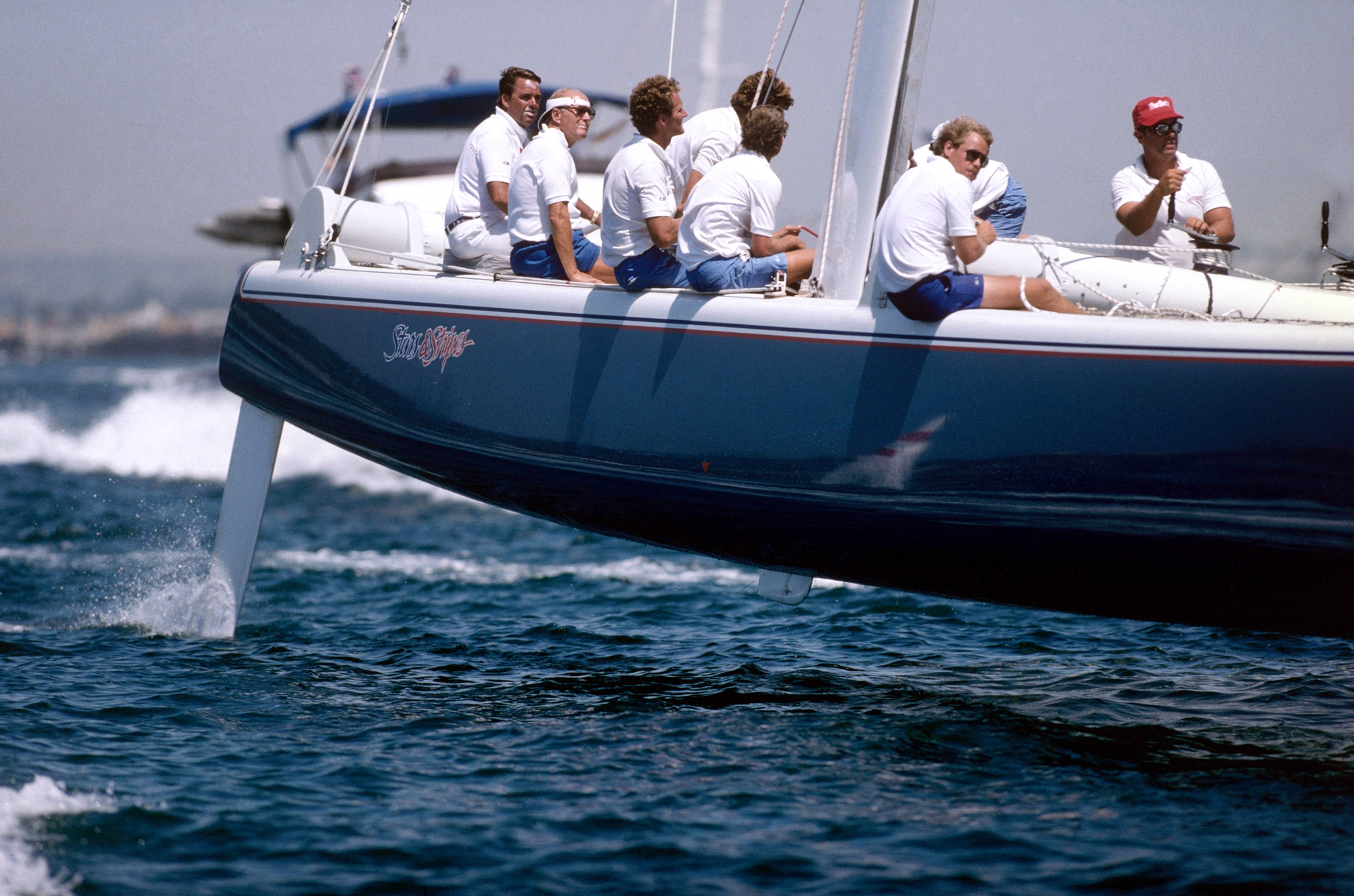
For the first time in 136 years, the America’s Cup was in the courts where it would stay for a prolonged period. Meanwhile down in New Zealand the extraordinary 132-foot 8-inch monohull that would feature no less than 17,300 square feet of sail flown from a 153-foot carbon fibre mast and crewed by 36 professionals was under construction to the drawings of Bruce Farr. It was, from the outset, an audaciously brilliant plan: wrong-foot the holders, steal a march in terms of build-time and development and snatch the America’s Cup in a one-on-one Match. The defenders were in something of disarray with debts still accruing from the 1987 victory and a skipper in Conner who was battle-weary after campaigning almost non-stop since 1980 in the 12-Metre class.
On September 1st, 1987, the New York Court handed down a restraining order preventing the America’s Cup from naming a venue. This was lifted on September 9th, 1987, and two days later, San Diego was named as the venue for what they perceived to be a normal Cup with multiple challengers to be sailed in 1991 with the full support of Mayor Maureen O’Connor and the city itself.
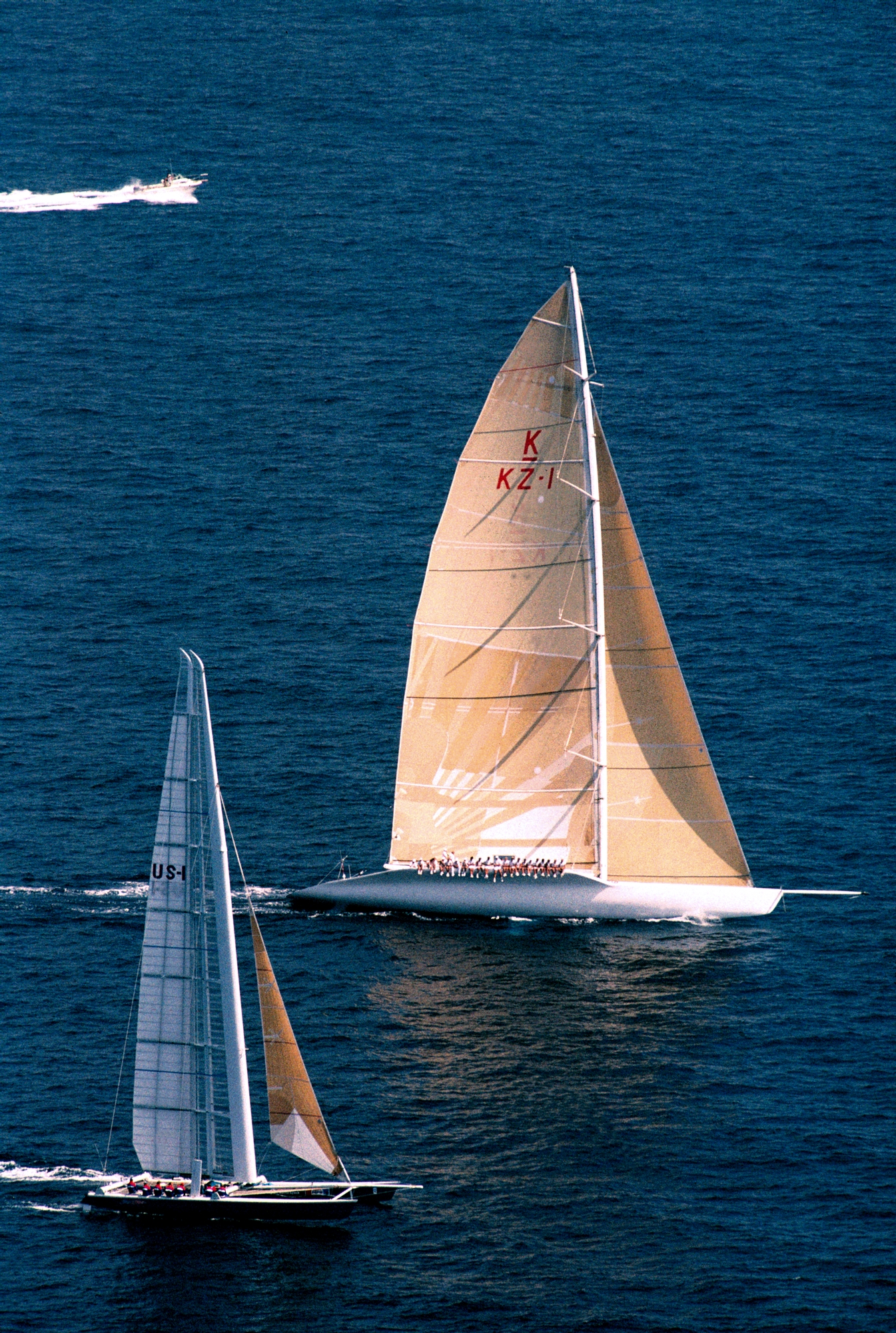
Michael Fay’s bid to challenge under the Deed of Gift was heard in the New York Supreme Court before Justice Carmen Beauchamp Ciparick with the San Diego Yacht Club arguing not only the legality of the challenge but also for a change in the Deed of Gift to allow the Defender to select not only the class and type of boats to be sailed but also the dates for the next competition. Interestingly the San Diego Yacht Club came up against not only Michael Fay and the Mercury Bay Boating Club but also the New York Yacht Club who argued against any change of the Deed of Gift – something that they held very much to be their own and sacrosanct.
The day before Thanksgiving of 1987, some eleven weeks after the first hearing was when Justice Ciparick handed down her ruling and declared that the Mercury Bay Boating Club Challenge was valid and “that the San Diego Yacht Club must treat it as such in accordance with the terms of the Deed.” Dennis Conner flew to New Zealand to meet with Fay and a bizarre press conference ensued whilst back in San Diego, Burnham and Ehman were busy plotting to keep their options open on the terms and boat they would field for the defence. On December 15th, 1987, Burnham proposed to Fay that both parties set aside their plans for a 1988 America’s Cup and come back with something more in the spirit of the event, with larger boats for San Diego weather conditions but crucially open to all nations. This fell on deaf ears despite the threat from Burnham that: “we will use every method not just to beat you, but to sink you.” An ugly America’s Cup was starting.
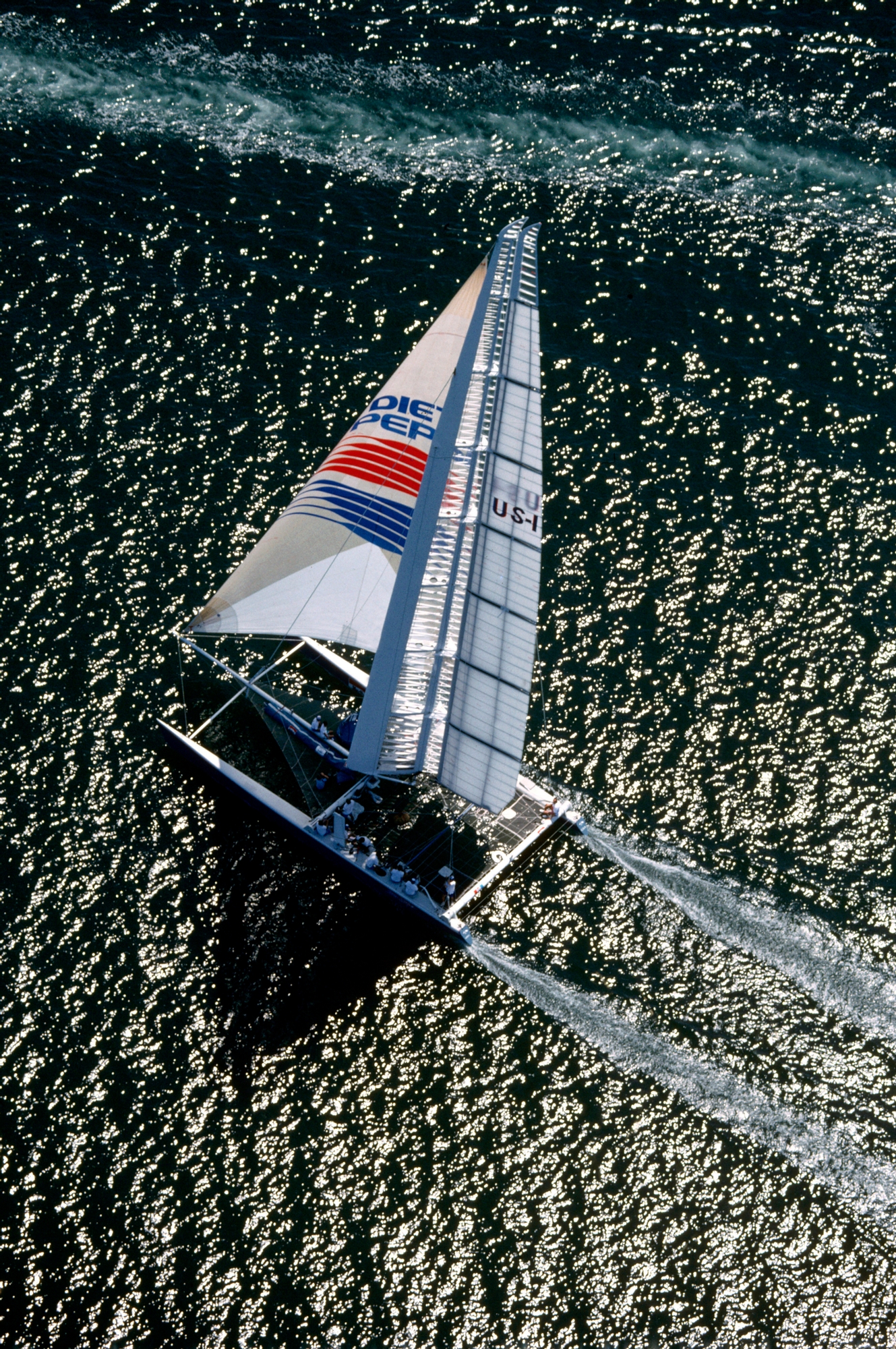
For the Sail America syndicate, Malin Burnham turned to Ed du Moulin to form a committee to study what would be acceptable as a defending boat for the upcoming Match and whether catamarans would be acceptable. There was precedence stretching as far back as Nathaniel Herreshoff in 1876 who brought a 30-foot catamaran to the Centennial Regatta of the New York Yacht Club and won two races easily over a fleet that numbered 90 vessels. Although disqualified over concerns about accommodation onboard, the dye was set and there was nothing in the Deed of Gift precluding catamarans from racing – although it was subject of lengthy legal debate.
‘Read the Deed’ became a slogan of Michael Fay and the New Zealand syndicate and it’s worth recounting that the original Deed of Gift that was written by George Schuyler when he presented the Cup to the New York Yacht Club in 1857 ran only to some 240 words. Subsequent re-wites in both 1881 and 1887 had sub-texts that favoured the club and also steered the Cup from becoming parochialized. A further re-write in 1956 brought the 12-Metre era in, and a subsequent memorandum issued by the New York Yacht Club in 1962 allowed for the club to dictate that the Cup should not be raced more frequently than every three years thus ensuring that club resources were not strained and removing significant control from the challenger. Furthermore, with the era of multiple challengers, the NYYC also instigated the ‘Challenger of Record’ arrangement thus distancing the club, as the defender, from dealing with the challengers until a winner had been declared.
Another significant protocol that only emerged after the Michael Fay challenge in 1988 was that the New York Yacht Club were running what’s known as the ‘vest-pocket challenge’ practice which dictated that a challenger would agree in writing to follow the procedures of the Deed of Gift and thus give power to the club to not have to deal with unruly challenges who would simply be discarded, and the ‘vest-pocket challenge’ accepted. If only the San Diego Yacht Club had known and implemented this, the torrent of legal actions and the subsequent damaging public relations around the 1988 America’s Cup could, arguably, have been avoided.
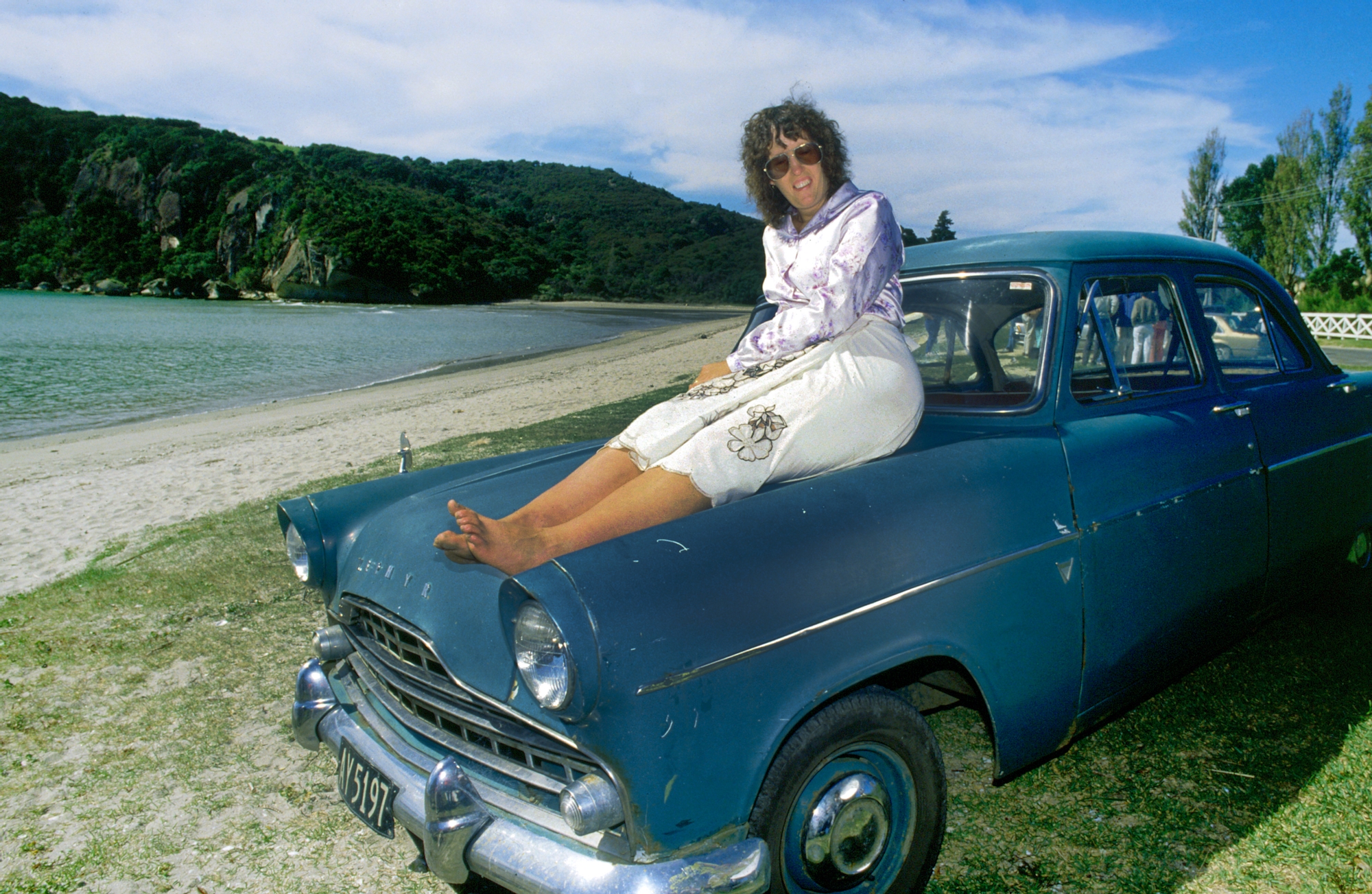
Whilst court proceedings continued, culminating in a ‘Demand for Compliance’ issued by the Mercury Bay Boating Club that would ultimately decide the fate of whether the races would happen or not, the Sail America syndicate proceeded with putting together not only a first-class design team but arranged some of the finest multihull sailors on the planet to join up. The highly-trusted John Marshall was appointed head of the design team with Britton Chance also brought in alongside Gino Morelli and Bernard Nivelt plus C-Class catamaran experts Dave Hubbard and Duncan Maclane. Two boats were to be built, one with a conventional soft-sailed rig whilst the other was a cutting-edge fixed-wing design that in hindsight was ahead of its time and both boats were built at the RD Boatworks in Capistrano Beach.
Randy Smythe, the Olympic Silver medallist in the Tempest Class and an established sailor on the burgeoning Formula 40 circuit was a key new recruit as was Cam Lewis, two-time Finn Gold Cup winner and well-known on the grand-prix multihull scene. Conner thought about stepping aside but was convinced to helm partly because of his connection to the San Diego Yacht Club where he had served as commodore, and also because his name and fame attracted the sponsorship dollars.
When the New Zealand boat was unveiled at the Royal Navy docks in Devonport, Auckland at the end of March 1988, it was like something from another world. Whilst the superyacht and maxi classes were seen as things of wonder for the ocean-going set, a stripped-out, fully carbon monohull designed for the America’s Cup of such scale hadn’t been seen in 50 years since the J-Class era and gained significant global attention – even today it marvels as the centrepiece of the downtown Auckland Viaduct harbour. KZ-1 showed impressive speed under the helmsmanship and co-skippering of David Barnes and Peter Lester but nothing that fazed the Americans who knew from the outset that their 60-foot, high performance catamaran would easily outperform the monohull – particularly off the wind.
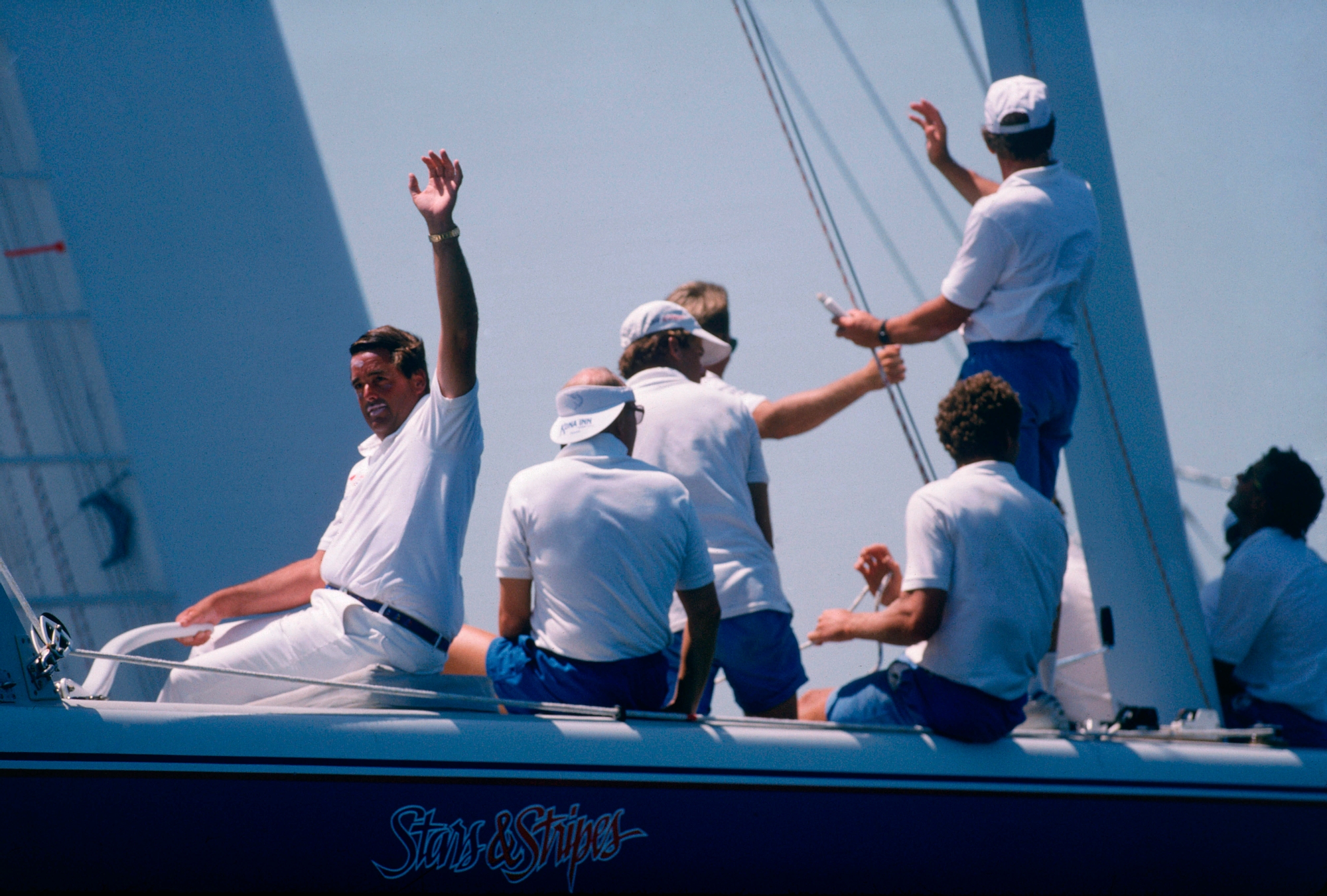
As the mis-match edged towards a reality, the media turned sharply against the Americans with the San Diego Yacht Club firmly in the sights for negative commentary. Conner saw it as a no-win situation saying: “If I won in the catamaran…everyone would say ‘there goes Dennis in a cheater boat.’ If I lost, they’d say: ‘There goes Dennis, losing the America’s Cup again.’ It was all round an ugly summer and an ugly America’s Cup.
The ‘Demand for Compliance’ – all 3,500 pages - issued by the Mercury Bay Boating Club to the SDYC was not complied with so the next step was to file against the club in a civil contempt case but Judge Ciparick gave something of a cautious green-light to getting sailing underway when she expressed her opinion that the Deed of Gift lacked sufficient clarity “as to whether multihulls are inherently banned from sailing the America’s Cup, to properly form a basis for the finding of contempt.” Legal caveats followed but what in essence Justice Ciparick was saying was: “Go and race.”
Finding a date for the scheduled best of three races proved harder than envisioned, clouded by the fact that the 1988 Olympic Games in South Korea were due to begin on the 17th September 1988 and that satellite broadcast availability would be consumed for the four-week period of the Games. The America’s Cup Deed of Gift Match had to be beforehand, and after much deliberation, the 7th September 1988 was agreed.
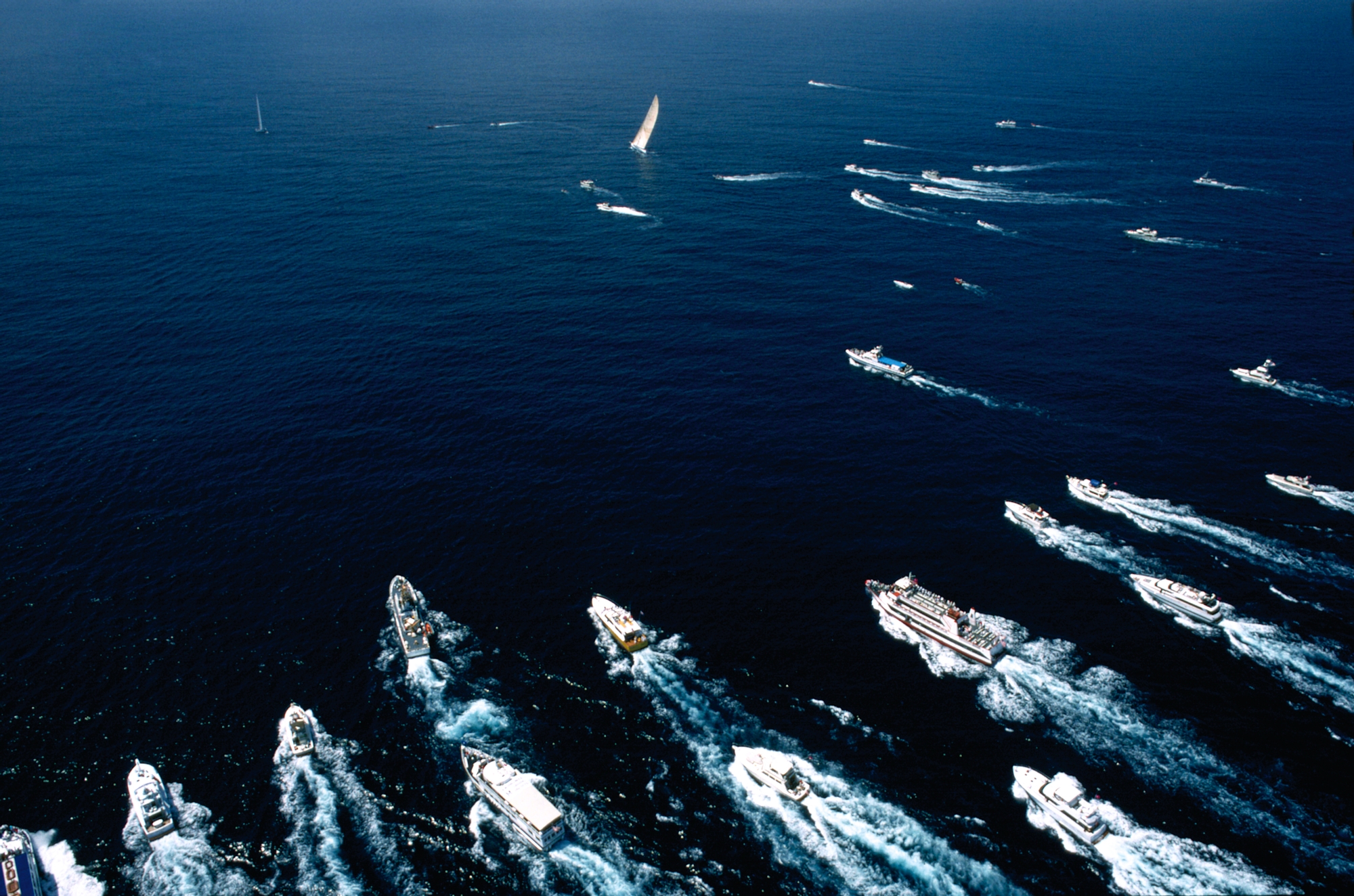
Anticipation built, with acres of newspaper coverage, moral outrage and commentary filling the airwaves and from outside the sporting sections too, the America’s Cup had crossed into politics, legalese and morality but when it came to it, it was a boat race. The opening day was light, fluky and with a veering 7 knot breeze that actually saw the boats sail outside of US territorial waters, briefly crossing into Mexican water near the Los Coronados Islands. A dull pre-start saw the catamaran run and hide out right whilst KZ-1 briefly followed before heading back on a classic time-on-distance reach into the pin end of the line. Conner trailed back in with Tom Whidden whispering in his ear and set-up to windward, crossing the line 10 seconds behind.
Almost immediately, the mis-match became apparent despite Conner not sailing Stars ‘n’ Stripes at her optimum with the crew on the weather hull, sailing the boat in full displacement mode. Despite this, the catamaran just eased inti the lead and as David Barnes began a short, eight tack, tacking duel, the Americans powered off into an unassailable lead, relentlessly pulling away. At times, it looked like Conner was stalling and it was clear that he was sailing the boat nowhere close to its potential – a point that David Barnes was keen to highlight afterwards – and the respect between the two camps was at rock bottom. The efficiency of the fixed wing was highlighted by the Stars ‘n’ Stripes crew after the race for its ability to point higher and generate the power but in one of the most famous America’s Cup quotes of all time, Conner put it more succinctly, smiling as he said in a testy Press Conference afterwards: “I’m sailing a cat. Somebody else is sailing a dog.” The winning delta was 18 minutes and 15 seconds but could easily have been more, such was the catamaran’s potential and obvious speed advantage.
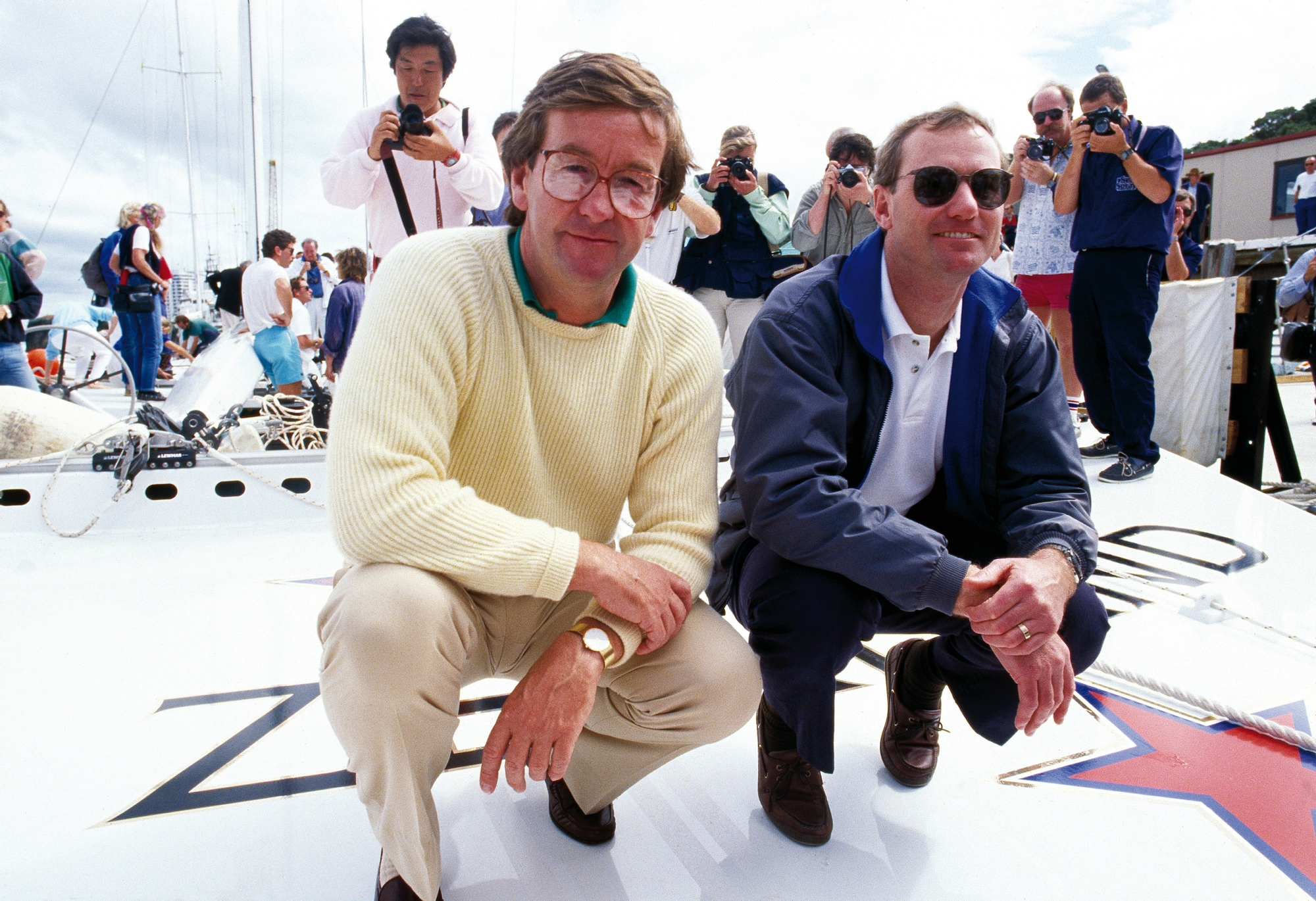
Two days later, and with a media furore around the seemingly un-sporting spectacle that was unfolding, Dennis Conner came back onto a 39-mile triangular Deed of Gift course, knowing that the defence of the America’s Cup was easily within his grasp. After a curious first beat where the two yachts engaged in a tacking duel that at one point saw Star ‘n’ Stripes dead in the water, Conner took advantage of a building breeze and stretched away over the reaching legs to take the win, secure the Cup and record a thumping 21 minute 10 second victory. However, the victory felt somehow hollow and despite a huge spectator fleet following both boats home, the battle for the 27th America’s Cup was really beginning in the New York courts.
First though, came an acrimonious Press Conference with Conner bristling and bitter against Michael Fay, Bruce Farr and David Barnes with the American drawing a poor analogy with the New Zealand boat against the current breed of IOR maxi yachts. This got the ire of Bruce Farr who felt that Conner and the team were ‘lying’ and called into question their professionalism. Farr re-iterated his anger post the scheduled conference and led to Conner saying: “get off the stage, you’re a loser.” Michael Fay meanwhile had reiterated throughout the press conference of his belief in the word ‘match’ and that the 1988 contest was anything but a ‘match’ – a tenet he would take before Justice Ciparick for a ruling later that week.
With the pre-Match ‘Demand for Compliance’ ruling in mind, expressly not giving the green-light for multihulls to race monohulls, Ciparick set about hearing arguments in October 1988 before finally issuing her decision on 28th March 1989. In it she cited the Deed of Gift wording around ‘centre-board or sliding keel’ indicating that George Schuyler’s original intentions had not envisaged multihulls competing for the America’s Cup and went on to say in her ruling: “The Deed of Gift, when read as whole, expresses the intent of the donor that the defender of the America’s Cup operating within the limitations of the challenger provisions, select a vessel that is competitive with that of the challenger. While this may not rise to the level of a ‘like or similar’ standard, the import is clear from the provisions of the Deed of Gift that, although design variations are permitted, the vessels should be somewhat evenly matched.”
It was clear that Ciparick was deeming the defence by Sail America to be incorrect and although she wanted to stay within the four corners of the wording of the Deed of Gift, where matters became confused, she cited George Schuyler’s memorandum letter of April 15th 1871 which stated that: “The cardinal principle is that, in the absence of all qualifying expressions, a ‘match’ means one party contending with another party on equal terms as regards the task or feat to be accomplished.”
In summary, Ciparick ruled that: “…whether the court limits its inquiry to the trust instrument (Deed of Gift) or accepts extrinsic evidence (Schuyler’s memorandum), it is clear that a catamaran may not defend in the America’s Cup competition against a monohull. Accordingly, San Diego shall be disqualified in the September 1988 competition.” Ciparick also drew attention to what she saw as a violation of the “spirit of the Deed of Gift” and duly awarded the America’s Cup to New Zealand.
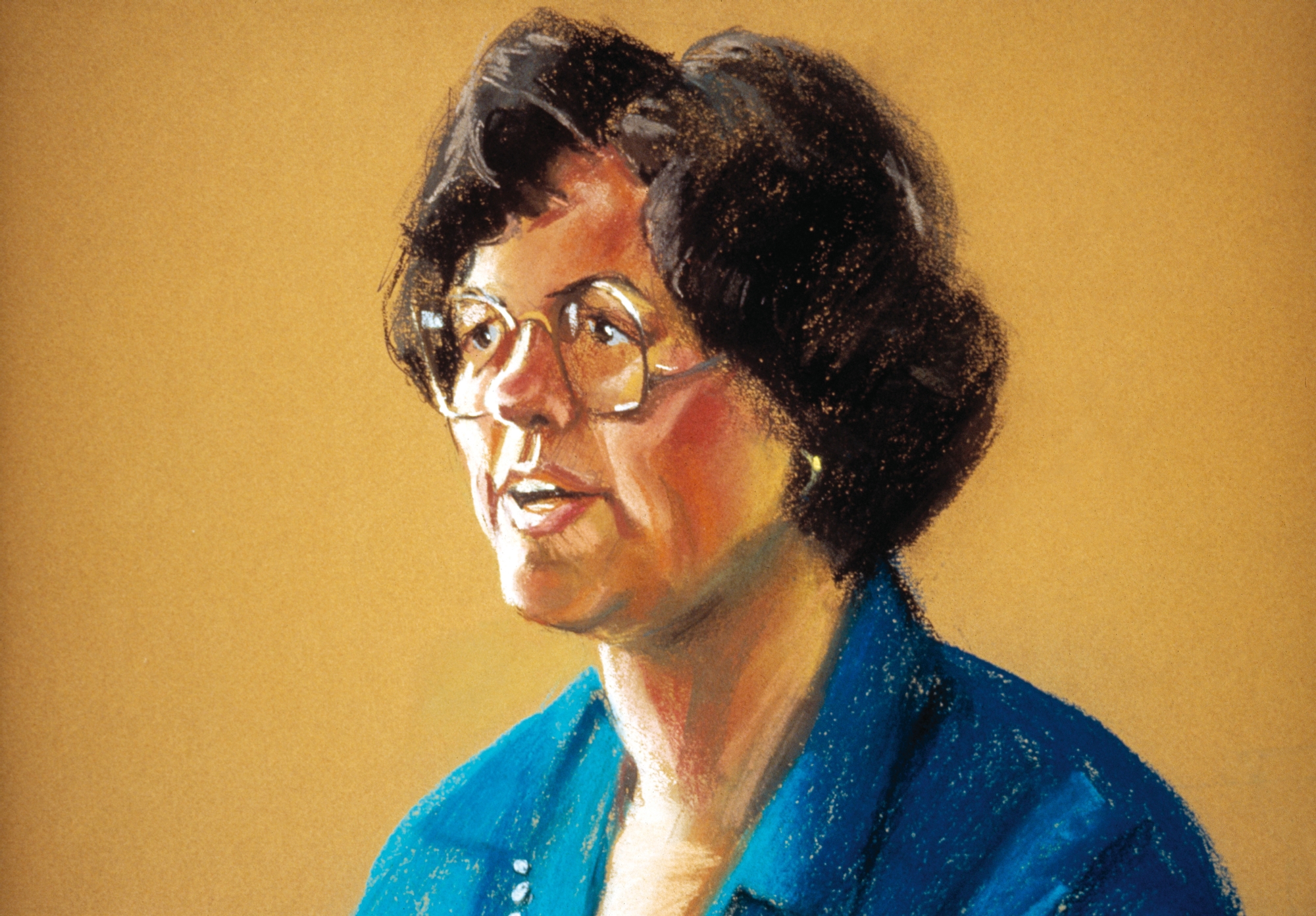
Michael Fay was delighted saying: “From day one, we knew we were right about the catamaran issue. We knew it was illegal because we considered challenging with a catamaran and discarded the idea because it was illegal. We never saw anything that changed our mind. Just the opposite. We became more and more convinced that, if tradition meant anything in the Deed of Gift, we were right. We never altered course.”
Immediately, in April 1989, the decision was appealed by the San Diego Yacht Club and the New York Attorney General whilst a storm of politics and accusations ensued with even the San Diego Mayor, Maureen O’Connor citing that: “I hate to say this decision was politically motivated, but we all know that the New York Yacht Club wanted the Cup to go to New Zealand so that they could compete for it on foreign soil in 1991…There is no question that Michael Fay has the best attorney and the New York Yacht Club has the best judge.”
With the Cup in limbo, the actual trophy was ordered to be held by the New York Yacht Club ahead of the various appeals and cross motions from either party. The Appellate Division set a date for June 8th, 1989, before five judges who returned a majority verdict in favour of San Diego Yacht Club and thus over-turned Justice Ciparick’s ruling citing that the use of extrinsic evidence to support her decision was un-lawful and set a dangerous precedent for the future not only of the America’s Cup, controlled by the Deed of Gift, but wider sports. Dissenting opinion was aired by bone judge, Justin Kassal, but the majority verdict stood and led to Michael Fay again appealing and describing the verdict as: “a disgrace to the sport. It is wrong, plain and simple.”
On October 18th, 1989, an appeal to the Court of Appeals was filed by Fay’s lawyers arguing: “The basic issue in this case is whether a trust instrument creating an international sporting ‘competition’ necessarily requires that fairness govern the event.” San Diego Yacht Club filed affirmation in opposition on October 19th, 1989, with support of Italian Raul Gardini who desperately wanted to avoid the case dragging on and precluding competition for the Cup. The appeal and counter appeal centred around fairness of the match and the wordings of the Deed of Gift – arguments that had been heard before and ruled upon but now were seeking outright clarification whilst seventeen of the most significant names in America’s Cup yachting were brought in to sign an Amici Curiae (friends of the court) to give a wider view and support the notion that forfeiture of the Cup to New Zealand was valid. Names such as Ted Turner, Bus Mosbacher, John Bertrand, Ted Hood, Sir James Hardy and Gordon Ingate, amongst others, signed the Amici Curiae.
On February 8th, 1990, the opening day of the appeals of the decisions in the New Court State Court of Appeals in Albany, saw seven judges reside for the ultimate fate of the America’s Cup. By April 26th, 1990, the judges had reached their final conclusions under the stewardship of Chief Judge Sol Wachtler – it was a 5-2 majority decision conclusively in favour of San Diego Yacht Club that stuck to the terms of the Deed of Gift whilst ignoring or discarding any ruling on subjective references of sportsmanship or fairness. Crucially, the judges rejected the New Zealand contention that the phrase ‘friendly competition between foreign countries’ required the defender to race a vessel of the same type or substantially similar to the challenging vessel and also excluded extrinsic evidence that perhaps was written to clarify the Deed of Gift document. All the presiding judges opined on was ultimately what is a ‘legal’ contest for the America’s Cup and in so doing, looked within the Deed of Gift and ruled accordingly.
In conclusion, Chief Judge Sol Wachtler stated: “This case has little or no significance for the law, but it has caught the public eye like few cases in this court’s history. Much of the reason for this attention, apparently, is the supposition that here at stake are grand principles – sportsmanship and tradition – pitted against the greed, commercialism and zealotry that threatens to vulgarise the sport. In the end, however, the outcome of the case is dictated by elemental legal principles.”
The America’s Cup thus stayed in America. Dennis Conner was quoted soon after, saying: “We didn’t ask for this match. We didn’t concoct it – Fay did. Then he said, ‘Hey wait, I don’t want you to defend yourselves.’ It was an alley fight. I got a little bloody, but we kept the Cup. I had a job to do. I could have walked away and let America lose. It was a thankless job, but someone had to do it. I’ll let history decide, and I think I’ll come out all right.”
THE NEXT EDITION TOOK PLACE IN 1992: THE CUP COMES ROARING BACK